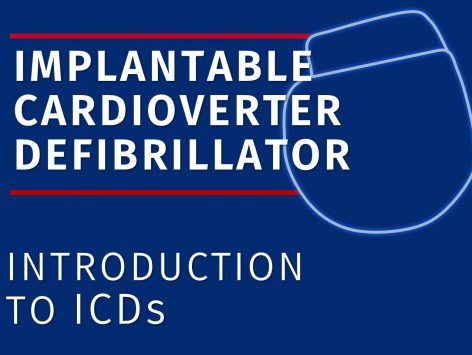In this course, we will introduce you to implantable cardioverter defibrillators (ICDs). Implantable defibrillators have been used in patients for >30 years. The majority of ICDs use transvenous leads inserted predominantly into the right ventricile for both pacing (distal tip) and for defibrillation (intracavitary coil or coils). Most clinical trials supporting the use of ICD therapy have been conducted with transvenous ICD therapy. ICD therapy prevents sudden death and prolongs life in patients at high risk of sudden arrhythmic death, provided that the patient does not suffer from other conditions that limit life expectancy to 1 year or less. On the other hand, ICDs may cause complications, including inappropriate shocks,, device-related infection and lead failure. Despite the indications for ICD therapy in post-myocardial infarction patients with reduced ejection fraction, which is strongly supported by evidence-based data, a clear gap exists between guidelines and clinical practices in several countries. A limiting factor in the use of an ICD is its high upfront costs

Course

